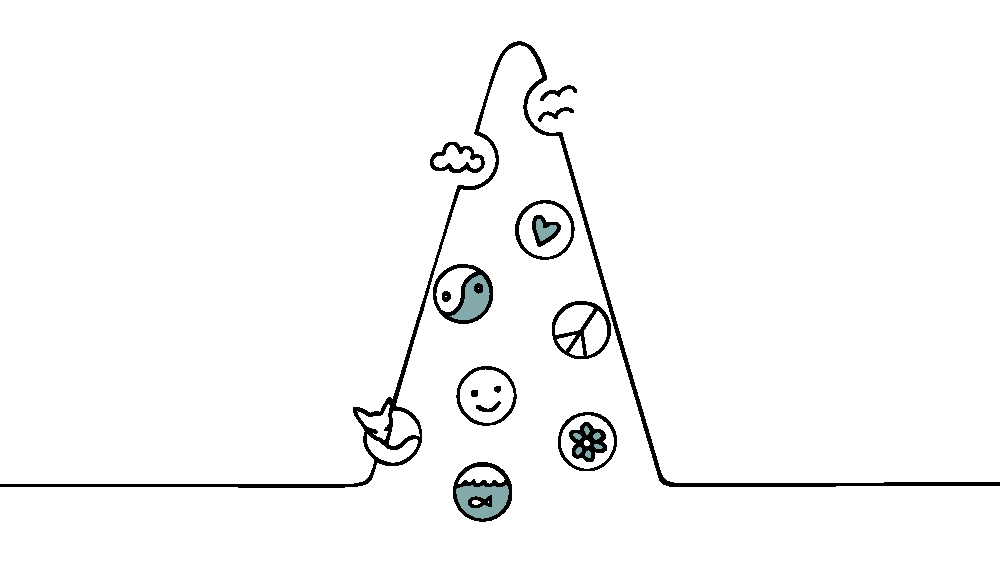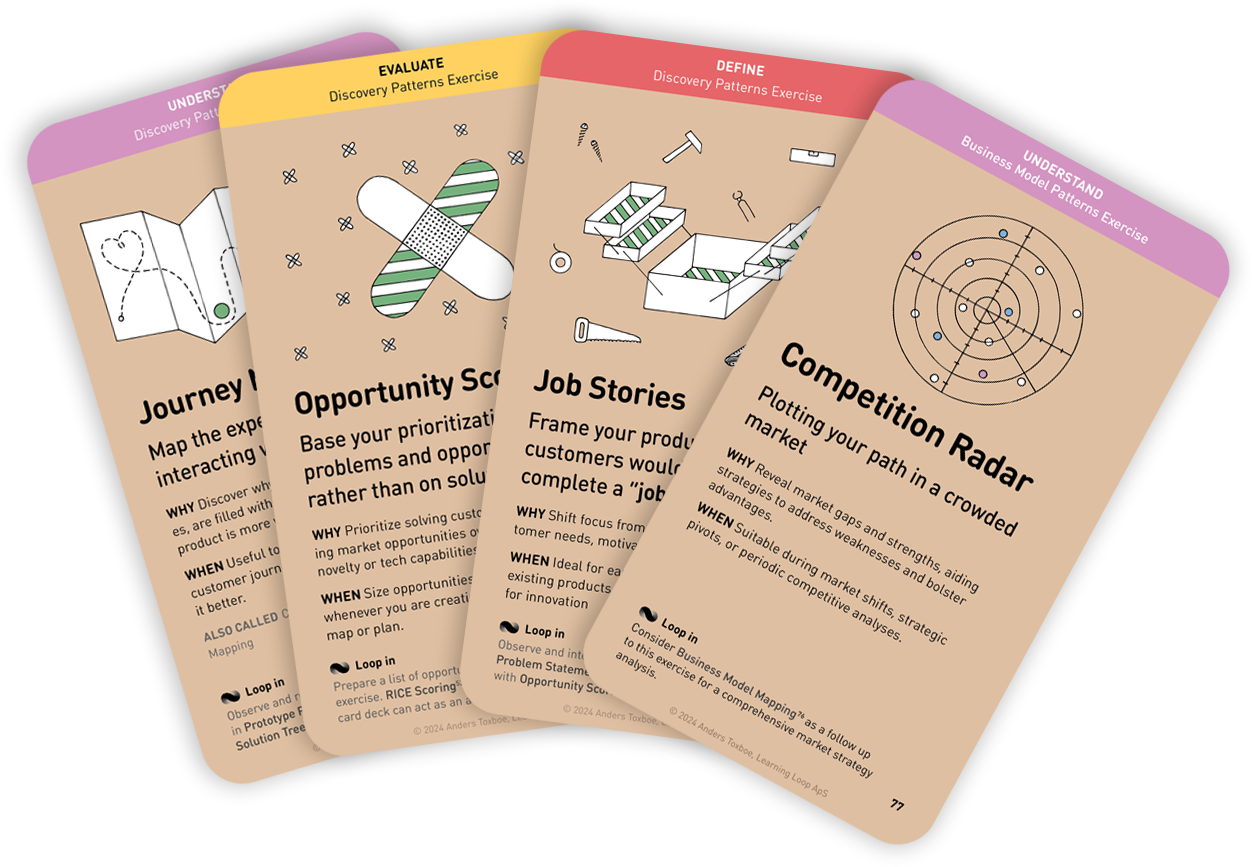Workshop Exercises: Define
Humanize Design Goals
Integrate ethical values into business-driven design goals

Why: Enrich business objectives with human values, ensuring that end goals are both effective and ethically responsible.
When: Beneficial before in the early stages of the design process, such as during research and before ideation phases
To foster a design approach that is deeply rooted in human values and ethics, design solutions should not just be technically and economically viable but also considerate of human dignity, diversity, and societal impact.
By consciously integrating human values into design goals, designers are prompted to think beyond the immediate business needs and consider the broader social implications of their work.
This exercise helps designers to adopt a more inclusive approach by considering a diverse range of human values and perspectives, leading to solutions that cater to a broader and more diverse audience.
It bridges the gap between business objectives and ethical considerations, creating a balance between achieving commercial success and maintaining social responsibility. By infusing human values into design goals, the quality of the design output is enriched, making it more user-centric, accessible, and ethically sound.
Instructions for running this play
Before the exercise: Articulating the existing design goal. This should be a concise sentence focusing on the problem to solve and the target audience.
- Restate the design goal
Lead a discussion to ensure clarity and collective understanding of the goal. - Define and discuss target audience
Let the group identify the target audience and discuss their specific needs and contexts. - Identify Human Values
Using a provided list of human values, each participant individually selects values they believe are most relevant to the target audience. The list below is a good starting point:
| Health | Physical, psychological, and material well-being. |
| Ownership | Right to possess and control objects or information. |
| Privacy | Freedom from disturbance and control over personal info. |
| Equality | Equal treatment regardless of individual or group differences. |
| Trust | Confidence in reliability and vulnerability of others. |
| Autonomy | Ability to make independent decisions and actions. |
| Transparency | Openness and clear communication in agreements. |
| Responsibility | Accountability and decision-making capability. |
| Respect | Considerate and polite treatment of others. |
| Identity | Self-understanding and acceptance of personal change. |
| Safety | State of psychological peace and composure. |
| Longevity | Sustaining ecosystems for present and future needs. |
- Discuss and decide on values
The group discusses their choices, aiming to reach a consensus on a set of key human values that align with both the audience’s needs and the company’s ethos. Together, the team narrows down the list to 2-3 core human values and discusses what each value means in the context of their target audience. - Phrase a Human Design Goal
Participants revisit the initial design goal and compare it with the selected human values. Rewrite the design goal collaboratively, integrating the chosen values. The aim is to ensure that the revised goal reflects both the business objectives and the human values. - Discuss future impact
Discussion on how this Human Design Goal will guide future design decisions and ensure they are ethically aligned and user-centered.
Use the Human Design Goal as a reference throughout the design process to ensure alignment with human values.
Tips to perfect this play
Master and adapt the play to fit your context and needs.
Tip
Ensure a diverse group of participants, including designers, engineers, researchers, and project managers, to bring a wide range of perspectives.
Tip
Foster an environment where all participants feel comfortable sharing their thoughts and perspectives.
Tip
Start the session with examples of how integrating human values has impacted design decisions in other projects. This can provide inspiration and clarity.
Tip
Introduce hypothetical ethical dilemmas related to the project to deepen the understanding of how human values can be integrated into design decisions.
A collection of workshop exercises that will help you ditch dull meetings and facilitate with confidence. It will help you master the design process and have more productive time with your team. The card deck will be ready for purchase in the end of 2026 and is now undergoing rigorous testing.
Reserve your deck!Related plays
- How to practice Ethical Design by Maheen Sohail
- Value Sensitive Design Lab
- Design for Worldview: A new way to teach design thinking by Emi Kolawole
- Friedman, Kahn & Borning (2004). Value Sensitive Design and Information Systems, University of Washington.
